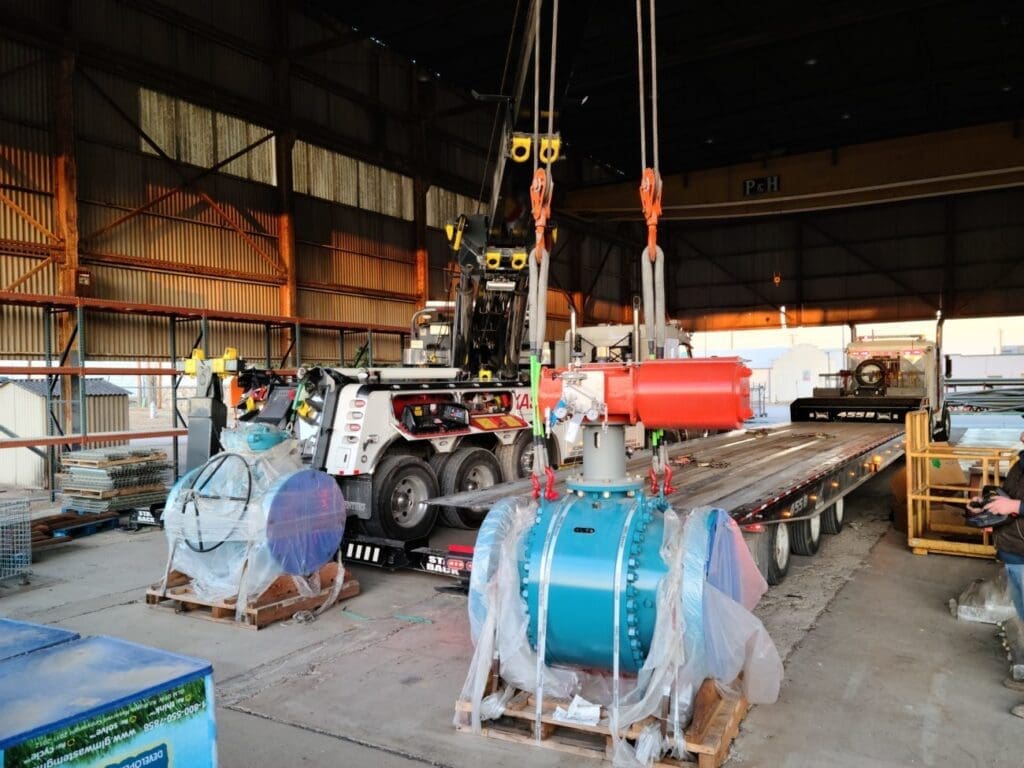Semi-trucks face significant challenges in achieving optimal fuel consumption. The typical semi averages roughly 6 miles per gallon (mpg). This number will fluctuate depending upon the amount of freight a truck is carrying, the aerodynamics, whether it’s going uphill (sometimes getting 2mpg) or downhill (sometimes 20+mpg), and various other factors affecting fuel efficiency. While fuel savings have improved since the 1970s, they haven’t increased by a significant margin. However, new developments in technology and advanced aerodynamic features are enabling large fleets to make simple additions to their trucks, allowing them to achieve substantial improvements in fuel consumption.

How does the aerodynamic drag affect semi-trucks?
There are four major areas that significantly influence the drag coefficient and air flows around a semi:
- The front of the tractor
- The gap between the trailer and tractor
- The sides and underbody of the trailer
- The back of the trailer
These critical areas determine how effectively a truck can reduce aerodynamic drag, and naturally, the methods used to make semi trucks more aerodynamic will specifically address these four zones of influence.
Key features that improve fuel efficiency
Gap minimization between the trailer and the tractor
The space between trailer and tractor represents a crucial aspect of a semi-truck’s aerodynamics, accounting for approximately 25% of total drag. This gap creates turbulent airflow, which generates significant friction. Fuel savings are notably reduced when the gap increases because it creates more resistance against the vehicle’s movement through the air. Modern designs focus on minimizing this gap to optimize overall fuel efficiency and reduce operational costs.
Trailer Skirts
Aerodynamic features like trailer skirts are placed underneath the trailer, strategically positioned between the trailer’s axles. These essential components redirect air flows and help reduce aerodynamic drag from the undercarriage. This enhancement improves fuel efficiency by placing less strain on the drive train, making it significantly more efficient at higher speeds. The integration of these skirts represents one of the most cost-effective ways to improve overall fuel consumption.
Trailer Tail Technology
The TrailerTail system addresses the drag coefficient created by the rear end of the trailer. Large rectangular boxes inherently create poor aerodynamic drag characteristics, making them one of the least efficient shapes to pull down the highway. This innovative technology significantly improves rear drag by optimizing air flows around the trailer’s end, which can enhance fuel savings by up to 6%. The system’s effectiveness has been thoroughly tested across various driving conditions and load types.
Advanced Aerodynamic
Some mud flaps are designed with aerodynamic benefits that reduce drag. Plus they make driving safer for others on the road since they catch debris that the wheels might kick up.
Wheel Covers
The wheels themselves can trap air as they spin, creating drag. Wheel covers can help reduce drag caused by a semi’s 18 wheels by closing air-trapping gaps and creating a more aerodynamic surface.
Rounded Corners
Finally, rounded corners on semi trucks further help reduce drag and improve aerodynamic performance. Studies conducted by NASA during the ‘70s and ‘80s confirm this, with tests indicating that rounding corners reduced drag by 54%. This also helped to reduce fuel consumption by up to 25%.
Advantages of More Aerodynamic in Semi Trucks
More aerodynamic semi trucks are advantageous to anyone in the shipping industry, and their benefits can extend to their customers as well. The key benefits of streamlining semis include the following.
Reduced Drag Performance
The primary benefit of reduced aerodynamic drag leads to cascading positive effects. With less air resistance against the truck and trailer, the engine doesn’t have to work as hard, creating advantages in both fuel consumption and component longevity. This reduced strain on the vehicle’s systems helps optimize overall performance and operational efficiency.
Improved Fuel Economics
Improved aerodynamic design yields substantial improvements in fuel consumption. This translates to reduced revenue spent on fuel over each shipment’s course, which becomes particularly significant over long journeys. The improved efficiency can also result in fewer refueling stops, potentially reducing delivery times and further optimizing operational costs.
Reduced Vehicle Wear
Improved aerodynamic performance significantly reduces wear and tear on vehicle components. The drive train and engine particularly benefit from having less aerodynamic drag to overcome during hundreds of long-distance journeys, especially when hauling heavy loads. This enhanced efficiency translates directly into extended component life and reduced maintenance requirements.
Lower Overall Operational Costs
The combination of reduced fuel consumption and decreased vehicle wear results in substantially lower overall expenses for hauling heavy loads and maintaining trucks. This cost reduction benefits both shipping companies and their customers, while making hauling more profitable for individual truckers. The implementation of aerodynamic features typically shows measurable return on investment within the first year of operation.
Industry Innovations in Fuel Efficiency
The transportation sector continues to evolve with groundbreaking developments in fuel efficiency. Kraft Foods pioneered the use of diesel-electric hybrid delivery trucks in 2009, while Walmart has revolutionized long-distance trucking with their Advanced Vehicle Experience Concept Truck, featuring:
The transportation sector continues to evolve with groundbreaking developments in fuel efficiency. Kraft Foods pioneered the use of diesel-electric hybrid delivery trucks in 2009, while Walmart has revolutionized long-distance trucking with their Advanced Vehicle Experience Concept Truck, featuring:
- A fuel-flexible, air-cooled microturbine-powered series hybrid electric drivetrain
- Carbon fiber trailer construction (10 times stronger than steel and lighter than fiberglass) saving approximately 4,000 pounds
- Streamlined design providing 20% aerodynamic improvement and 10% fuel savings
Industry Innovations in Fuel Efficiency
It’s not just major corporations embracing efficiency improvements. Heavy Duty Trucking’s “Top 50 Green Fleets” showcases companies implementing various fuel-saving measures:
- Celadon Trucking’s comprehensive approach includes trailer side skirts, truck side skirts, cab extenders, aerodynamic bumpers, roof caps, and SmartWay-certified tires
- Gordon Trucking’s sustainable practices include recycling all waste materials and reusing fuel from filtered components
- FedEx Freight’s driver education programs focusing on fuel-efficient driving techniques
Measurable Impact
These initiatives deliver significant results across the industry:
- Verizon’s fleet of 35,000+ vehicles saved over 200,000 gallons of fuel in 2012 through idle reduction
- Unilever’s backhauling partnerships reduced vehicle distances by 50,000 km and cut distribution costs by 10%
- Multiple companies report 15-25% improvements in fuel efficiency through combined aerodynamic modifications
Frequently Asked Questions
What is a trailer tail on a semi truck?
A trailer tail (also known as a boat tail) is an advanced aerodynamic feature designed to significantly improve fuel efficiency by optimizing air flows around the trailer’s rear section, reducing overall drag coefficient.
What are the side skirts on semi trailers for?
Side skirts are essential aerodynamic features that reduce aerodynamic drag and minimize turbulent airflow beneath the trailer. These components enhance fuel consumption metrics by improving the vehicle’s overall aerodynamics.
Why do semi trucks have flaps on the back?
Rear tail fairings serve dual purposes: they help reduce aerodynamic drag on the vehicle while protecting other motorists from debris. These aerodynamic features optimize air flows and enhance safety by catching gravel or other road materials that might otherwise damage following vehicles.
How do semi trucks reduce drag?
As described above, there are many ways semi trucks reduce drag. These methods include trailer skirts, tails, wheel covers, closing gaps, and rounding corners, to name a few.
Optimized Hauling Shipping and Logistics Solutions with Next Exit
Next Exit Logistics understands how aerodynamics and fuel efficiency impact your bottom line. Our services include:
- Strategic route planning for optimal fuel consumption
- Access to carriers with advanced aerodynamic features
- Real-time monitoring of efficiency metrics
- Comprehensive logistics management solutions
Contact Next Exit today to learn how we can help you achieve better fuel savings and reduced operational costs through intelligent freight solutions, regardless of the size and weight of your particular load. Our team of experts will work with you to develop a customized transportation strategy that maximizes both efficiency and cost-effectiveness for your specific needs.




